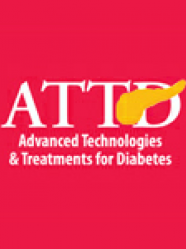Getting Hip on New Technologies in Basel, Switzerland

by jessica swienckowski
Recently, we journeyed to the wonderland of Basel, Switzerland, for a meeting that is quickly becoming one of our favorites. The Advanced Technologies and Treatments for Diabetes (ATTD) meeting featured stellar faculty and many insights – we think the other 900 attendees from across the globe would agree. Topics of particular interest included an increased push for developing devices for type 2 diabetes and new research on the use of mobile technology (say “hello” to telemedicine!). For the hardcore science types, if you’d like to download some free writings that were put together by numerous respected doctors for this meeting, see here.
stepping up the game for type 2 diabetes and obesity
The technology in diabetes has long been focused on type 1, with type 2 therapies usually associated more with pharmacological interventions. However, at this meeting, many sessions were devoted to technology for type 2 diabetes and prevention of complications.
Interest in making insulin pumps more accessible and user-friendly for type 2 diabetes has slowly been increasing – with insurance coverage improving, we believe that trend will accelerate in the near future.
We also expect to see, for type 2 diabetes, more availability of continuous glucose monitors (CGM) and improved CGM coverage, as pumps designed with these patients in mind (such as Calibra’s Finesse) enter the market in the coming years. We see this as a big step forward for personalized and individualized therapy for all people with diabetes. Gone are the days when careful glycemic control was reserved for type 1 patients – with this push to make pumps available for type 2 patients, we see a change of opinion about how best to treat type 2 diabetes. Beyond insulin pumps and CGM, we also heard a few presentations on interesting technology in development used to prevent and treat obesity. These devices are designed to mimic the effect of the incretin hormones or gastric bypass surgery – this trend of technology imitating surgical procedures is one we will certainly be watching in the years to come (see our diaTribe dialogue with Dr. Lee Kaplan for more on this exciting area).
Researchers are working to develop a variety of tools that will provide patients with support in taking care of their diabetes, improving exercise habits, or losing weight.
how to get your doctor in your pocket
The dawn of telemedicine is upon us! Considerable airtime at this meeting was devoted to the art and science of integrating therapy-support-technology into diabetes treatment regimens. Researchers are working to develop a variety of tools that will provide patients with support (wherever it is needed – the home, kitchen, or gym) in taking care of their diabetes, improving exercise habits, or losing weight. Examples include: cell phone programs that can transmit glucose values, meal information, exercise information, and even questions about changes in therapy to the patient’s health care provider (who can reply back) via text message; a cell phone-like device that contains an advanced accelerometer that will keep track of what kind of activities the wearer does and for how long he/she does it; or a camera phone-like device that allows the user to take pictures of meals to help assess the calorie content and compare it with his/her calories burned. While the current research on the outcomes of using this kind of technology is not overwhelmingly supportive, we note that many trials have been small and littered with design issues. This technology is still in its infancy – we expect to see many improvements that could lead to better efficacy.
smarter drugs and technology – reinventing the old and breaking the mold
This meeting was a great stage to review several developments in pharmacology and technology, whether re-invention or innovation. We enjoyed hearing the presenters' excitement for the latest research on new insulins (especially ultra-rapid acting and new long-acting analogs), making better use of already available technology (self-monitoring blood glucose devices and pumps), and breaking the mold with new classes of drugs (SGLT2 inhibitors and glucokinase activators – see Learning Curve from diaTribe #8 for more on these compounds and other new drugs in development).







